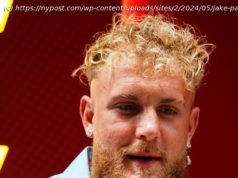It’s been five years since carnage and death sent his family running into the night, leaving them separated and terrified as a gunman rained bullets into an outdoor country music festival crowd on the Las Vegas Strip.
The memories don’t fade, they sharpen, William “Bill” Henning said as he prepared for ceremonies in Las Vegas marking the date of the Oct. 1, 2017, massacre.
“Chaotic and unreal, » he recalled. “A human stampede. People were bleeding and screaming and running. We all got separated. We didn’t know who was alive. That was the most difficult.”
He’s now part of a survivor community thousands strong, one that’s helped him sort through the horror of what happened during the deadliest mass shooting in modern U.S. history. Fifty-eight people were killed and more than 850 were injured among a crowd of 22,000.
In the years since, the grim drumbeat of mass shootings has continued: schools in Uvalde, Texas, and Parkland, Florida; grocery stores in Buffalo, New York, and Boulder, Colorado; bars in Dayton, Ohio, and Thousand Oaks, California; a city building in Virginia Beach, Virginia; a Walmart in El Paso, Texas. Meanwhile, the debate over gun laws in the U.S. rages on, including a renewed challenge to the federal regulation sparked by the Las Vegas shooting.
The massacre is part of a horrifying uptick of shootings with especially high numbers of people killed, said James Alan Fox, a professor of criminology, law and public policy at Northeastern University in Boston. Five of the nine mass shootings in modern U.S. history with more than 20 people killed have taken place since 2016, starting with the Pulse nightclub in Orlando and continuing through the elementary school shooting in Uvalde, Texas.
“The severity of public mass shootings has increased in the past few years. That’s clear,” Fox said. “And worrisome.”
Fox oversees a database maintained by The Associated Press, USA Today and Northeastern University that tracks mass killings involving four or more people slain, not including the perpetrator.






